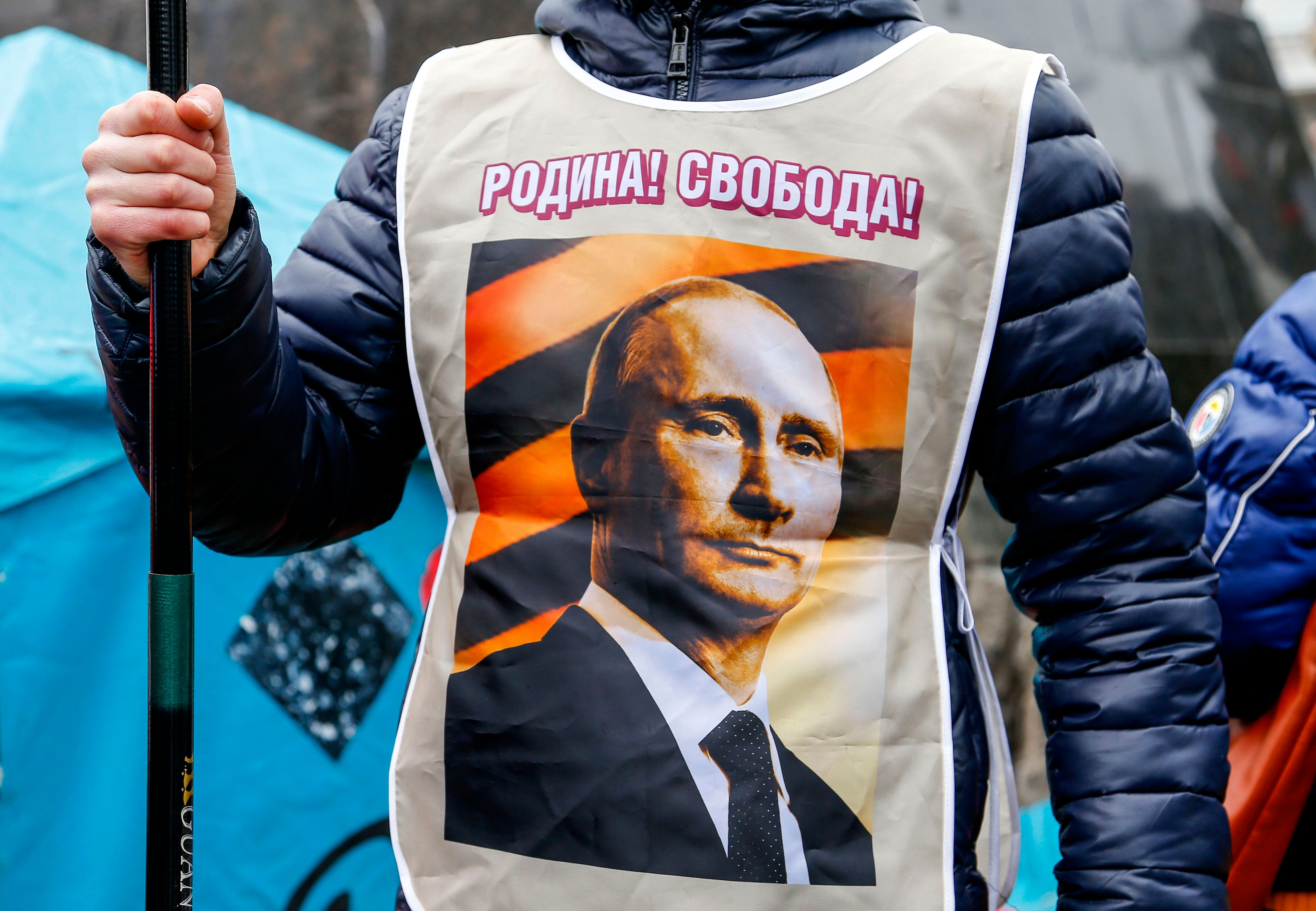Analysis: Putin's take on history may lay groundwork for war
Russian President Vladimir Putin has laid out his version of Ukraine's history, saying that Ukraine was always part of Russia

Russian President Vladimir Putin laid out his version of Ukraine’s history, saying essentially that Ukraine was always part of Russia. While that serves his purpose, it is also a fiction. Ukraine has its own thousand-year history.
What is now Ukraine was a contested region of shifting borders for centuries that did not come completely under Moscow’s rule until late in the 18th century during the reign of Catherine the Great, and even then the Russian Empire was never able to swallow it easily or completely.
In his present-day effort to bring an independent, Western-looking Ukraine back into Russia's orbit, Putin is following a well-trod path of many of Russia’s rulers before him — from Peter the Great to Josef Stalin.
For the West, the question is whether it can limit Putin’s revanchist ambitions through diplomacy, sanctions and Ukrainian military resistance. The recognition of the two breakaway regions by Putin, and the sending in of Russian troops already threatening the country, could easily be the trigger for a wider war for all of Ukraine.
“I consider it necessary to take a long-overdue decision: To immediately recognize the independence and sovereignty of Donetsk People’s Republic and Luhansk People’s Republic,” Putin said, referring to two pro-Russian parts of Ukraine in the Donbas region that since 2014 have been engaged in a war with the Kyiv government that has claimed an estimated 14,000 lives already.
Every modern state, especially in Europe, has had centuries of changing borders, and the emotional tug of nationalism can lead to demands, ultimatums and often war for territory, power and influence. In his speech to the Russian public on Monday night, a sometimes sullen, sometimes angry-sounding Putin was dismissive of modern-day Ukraine, arguing that its creation as a sovereign state was a tragedy and an accident of communist leaders in the 20th century.
Acting as though there had never been a historical Ukraine until Soviet times, Putin blamed at times Vladimir Lenin, at times Stalin and at one point he saved scorn for the decision of Nikita Khrushchev to take Crimea from Russia in 1954 and award it to Ukraine.
As with all historical narratives, there were elements of truth in what Putin was saying. Ukrainians and Russians are related eastern Slavic peoples whose destinies have been both intertwined and separated throughout history. But he preferred to focus on the time of Russia's maximum dominance over Ukraine — neatly forgetting that it has been a separate state recognized by international treaties and explicitly by Russia over the last 30 years. Instead, he painted today's Ukraine as a corrupt, barely functioning puppet of the United States that threatens Russia's security and, in his view, has no real reason to exist except in union with Russia.
Both Ukraine and Russia trace themselves to Kievan Rus, a trading center set up by Vikings along the Dnieper River more than 1,000 years ago, before Moscow even existed, that was originally pagan and later embraced Orthodox Christianity. Kievan Rus fell afterward to the early 13th century Mongol invasions of Europe. Muscovy did not emerge from being a vassal state until the late 15th century.
Instead of being connected to Russian Moscow, all of what is now Ukraine instead for centuries was part of the Grand Duchy of Lithuania from the 1300s, and later of the Union of Poland and Lithuania, a vast multilingual, multiethnic state whose territory encompassed almost all of what is now Poland, Lithuania, Belarus and Ukraine (and parts of what is now Russia.)
In its eastern and southeastern regions, the union's dominant languages were Polish and Ruthenian, the predecessor to modern-day Ukrainian and Belarusian. The population included Ukrainians, Poles, Belarusians, Lithuanians, Jews and Tartars.
Uprisings by an army of Ukrainian Cossacks against Polish lords and landowners in the middle 1600s led to a Cossack alliance with Moscow and eastern Ukraine breaking off from the Polish-Lithuanian Union and pledging loyalty to the czar in 1654. Western Ukraine remained part of the Polish-Lithuanian Union for another 150 years, until Poland was partitioned for the final time in 1795 and erased from the map of Europe.
Poland rose again after World War I and fought a territorial war with Soviet Russia between 1919 and 1922, winning back much of Ukraine. Those lands returned to Soviet control a generation later during and after World War II, but after the war Ukrainian nationalist partisans fought on against the Soviets in a guerrilla resistance for several years.
The “great famine" or Holodomor imposed on Ukraine by Stalin in the early 1930s had led to millions of deaths and seeded lingering Ukrainian bitterness toward Soviet Russian rule.
That the Bolsheviks recognized Ukraine as a separate socialist republic when the Soviet Union was created was no accident.
It addressed the reality of Ukraine's separate history and identity, poised somewhere between Moscow and the West for most of its existence, but never given the chance to rule itself until the collapse of the Soviet Union in 1991.
Contrary to Putin, most Ukrainians do not clamor to be part of Russia today, and anti-Russian sentiment in most of the country has only increased since Russia's 2014 seizure of Crimea and the taking of the Donbas region by pro-Moscow separatists.
Now with Russian troops marching into the Donbas region of eastern Ukraine again, it looks as though the millennial-long tug of war for dominance in the area, with the use of force of arms or diplomacy as needed, is about to renew again.
___
EDITOR'S NOTE — John Daniszewski, an AP vice president and former correspondent in Eastern Europe, has written about European affairs since the 1980s.
Bookmark popover
Removed from bookmarks